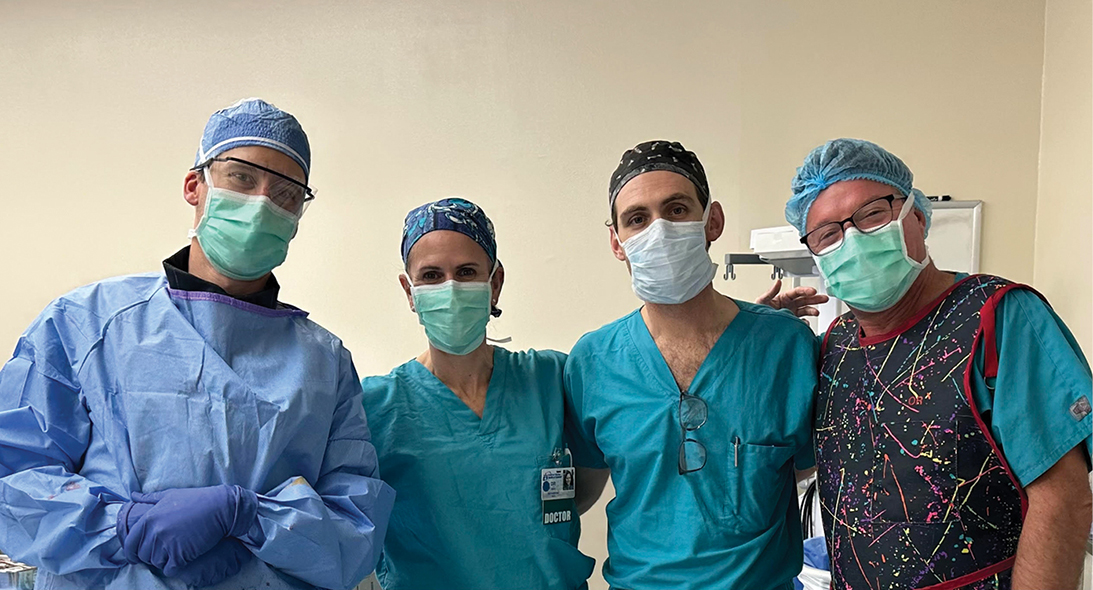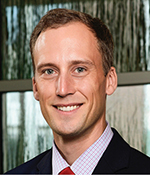
On the evening of Oct. 25, 2023, there was a mass shooting in Lewiston, Maine, with 18 people killed at two locations. Central Maine Medical Center in Lewiston, a Level III trauma center with 11 ORs and 200 beds, received 13 victims, with injuries ranging from isolated soft-tissue wounds to more than a dozen gunshot wounds.
Ian Engler, MD, an orthopaedic surgeon in Lewiston, was one of the many physicians and other caregivers who heard the news and rushed to the hospital to help. He is in his second year of practice after completing training at Dartmouth Medical School, followed by an orthopaedic surgery residency at Tufts Medical Center and a sports medicine fellowship at the University of Pittsburgh. No amount of training, though, can fully prepare a physician for a mass shooting in a close-knit city. For AAOS Now, Lisa K. Cannada, MD, FAAOS, FAOA, FACS, sat down with Dr. Engler to discuss his role in the events and the aftermath.
Dr. Engler: Lewiston is Maine’s second largest city, with a population of 37,000. It is a small city where everyone has some degree of connection to almost everyone else, and it is generally a safe place. Maine is a state with a low homicide rate, with 29 in 2022 (15 of them domestic). I chose to work here because of the hardworking people, the tight-knit community, the need for sports medicine, and the outdoors access.
What happened when you heard the news of the shootings?
I heard about the shooting and just got in my car and drove in. No one needed to ask us to come in, everyone just showed up—from advanced practice providers to X-ray techs to nurses to doctors. When I called the equipment rep to get external fixators ready, he was already bringing them to the ORs.
How did the evening unfold?
Within minutes of word getting to the emergency department (ED) about the shooting, patients were moved to open up entire wings for the incoming victims. Then the ED filled up quickly. There was a police presence in and around the ED. Fortunately, we all felt safe inside—though some warned us not to go near windows, as the shooter had not been caught. As surgeons, our place was in the OR—we largely stayed out of the ED, trusting that they would triage victims quickly to the OR. Trauma, orthopaedic, and vascular surgeons were all much needed, and most [members] of our departments were there. Sometimes all three subspecialists were working on the same patient. It was true teamwork. The orthopaedic surgeons had a group text (without patient identifiers) to communicate what was going on in each room, findings on secondary assessments, and where we were needed. Another orthopaedic surgeon was reviewing all the X-rays. Partway through, a ton of food showed up at the OR desk—you don’t think about how you need that, but it definitely helped us keep going. We did what needed to get done. I went home around 3 a.m.
Being 2 years out from training and having to deal with this tragedy, how prepared were you?
I never expected something like this would happen to our community, but orthopaedically, I was prepared. I feel lucky to have had great training, so I was equipped to take care of any injuries, either with damage-control orthopaedics or definitive care. Being part of an orthopaedic department full of skilled and diverse subspecialists meant that we could rely on and help each other, with various surgeons taking charge depending on the injury. We know how to take care of these patients—it’s mostly a matter of thinking clearly and working efficiently to do it well in a mass casualty situation.
For 48 hours, the community was on lockdown. Tell me what you did in terms of your work schedule on Thursday and Friday of that week.
On Thursday, Oct. 26, I had 25 patients scheduled in clinic. Although I had left the hospital in the early morning, I did not want to cancel on my patients last minute. I did telehealth from home, as the clinic was closed. I thought it was important to make sure that we saw all the patients who needed us and that we were there emotionally for them. We needed to rally together as a community after that, and me calling people could contribute to that at least a little bit. I made sure to ask how they were doing and made it clear I was willing to talk if they needed it. On Friday, Oct. 27, the hospital was open for my elective cases, though the clinic remained closed.
What was the aftercare like?
We had to be very thorough in our secondary and tertiary surveys so as to not miss any injuries. It is incredible how many bullets that gun put out and the size of the soft-tissue damage from each bullet. We had to coordinate care over the next several days to weeks with many other services. I’m very proud of our teamwork and care. Despite being a level III center, we were able to take care of the injuries acutely and over the next few weeks. Only one patient was transferred out for complex reconstructive procedures.
How do you approach things differently after this tragedy?
I have a lot more empathy for my patients in terms of realizing where they came from and the emotions that they are feeling. You never know what someone is going through—and the community has been through so much in the months since the shooting. If a patient is late, in a bad mood, or stressed, I give them the benefit of the doubt. That makes me be a better doctor to them and makes me a happier person. Lewiston is bouncing back. There are “Lewiston Strong” signs and support all over. The amazing thing about this tragedy is how the community showed up in the moment—such as hospital staff pouring in to help—and in the subsequent weeks.
What advice do you have for orthopaedic surgeons who are in the vicinity of a mass casualty event?
Go to the hospital quickly, even if you’re unsure of the severity initially. Once in the hospital, be proactive and organized without interfering with other providers. Help in whatever manner you can, realizing it might not be in your area of expertise or even the regular role of a doctor. Think clearly despite the chaotic and emotional situation. And then process the event after, when you have the ability. We need to turn off emotions in the moment to do our job, but then we don’t want to keep those emotions bottled up for too long. Talk about it with loved ones and colleagues to come to terms with what you went through.
What are the takeaway messages to the orthopaedic community?
As orthopaedic surgeons, we see firsthand how much damage these guns do, especially semiautomatic rifles—so many bullet holes, neurovascular injuries, and patients harmed forever. We can share that experience to help show people that we need to do something about this. These mass shootings cannot continue to happen. I more fully appreciate the importance of advocating for gun control. Guns are a part of life for many in Maine, and we can protect that. At the same time, we need to reevaluate ourselves as a society and make gun control a priority. We can maintain the right to bear arms while putting safeguards on who has guns and what guns are available. Otherwise, we will just sit by while these tragedies continue to unfold across America.
Lisa K. Cannada, MD, FAAOS, FAOA, FACS, is an orthopaedic trauma surgeon at Novant Health Fracture Clinic and faculty at the University of North Carolina School of Medicine Charlotte campus and Hughston Clinic.
